Deploy Parallels RAS to Microsoft Azure in half an hour

To organize remote access for employees is an applied task. There are a lot of decisions on the market, and there are plenty of pitfalls. Under the cut the story of our "suitcase", which unfolds quickly and conveniently in 30 minutes. Please do not take this as an ad BS, because inside the real instructions for use.
Parallels Remote Application Server (RAS) is a comprehensive tool for delivering virtual applications and desktops, allowing you to work with applications and data from any device, including mobile. We understand that such decisions would first like to be tested under specific conditions before making a purchase decision.
')
If you just want to try, here is the distribution of full-featured Parallels RAS in the Azure Marketplace , from which you can deploy a full-fledged RAS on a single machine running Azure IaaS. If you do not know where to start, here are the detailed instructions with pictures and an introductory video , they will help you quickly configure RAS in Azure, test it, and even start continuous operation.

And if you need detailed configuration of a highly available system, then there are a number of interesting features. Below is the experience of our expert Frick Berson on deploying and configuring a highly available RAS system in the cloud.
Meet Freak Berson
Freak Berson ( Freek Berson ), an enthusiastic user who holds the Microsoft MVP for Remote Desktop Services, joined the Parallels RAS VIPP program as one of the key players. Freak experimented a lot using Azure Resource Manager (ARM) to automate deployments. At one of the VIPP meetings, Frick mentioned the possibility of using ARM for deploying large environments and implying high availability. Below is Frick's story on how to make highly available Parallels RAS deployment using Azure.
purpose
Azure Resource Manager (ARM) has greatly affected the Azure Cloud. ARM allows you to use a declarative language to place any combination of objects in Azure as efficiently as possible. With ARM, you can uniformly deploy environments in multiple subscriptions (subscriptions) and similarly configure OTAP environments. ARM allows you to implement object tagging and role-based access control so that there are no surprises in the monthly bill for Azure.
I decided to create a new ARM template to fully deploy high-availability Parallels RAS to Azure IaaS. I contacted Parallels so that they would help with tips and publish the results of my experiments.
In addition to quickly (re) deploying highly available Parallels RAS, the ARM template can also be used to deploy production environments. Parallels employees helped put the template on GitHub, so you can use it and modify it.
Required Requirements
To successfully deploy using this template, you need to meet several requirements.
Active Directory Domain Services
Parallels RAS role services are dependent on Active Directory Domain Services (ADDS). You need to install and configure ADDS before running the template. Minimum requirement: one domain controller running in Azure IaaS, and access to the domain admin account. If you want to place the Parallels RAS server in a specific folder, create an OU structure. In our example, we used the following structure:
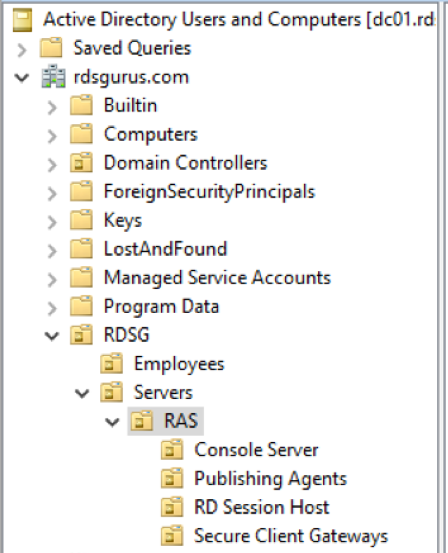
Vnet and subnet
The ARM template will deploy multiple virtual machines to Azure IaaS, and for this it needs Vnet and subnet. Below is an example of a Vnet configuration with the name “ras-vnet” and an address space of 10.40.40.0/24.

Vnet must be configured so that at least one DNS server points to the domain controller. In our example, the domain controller is 10.40.40.4.
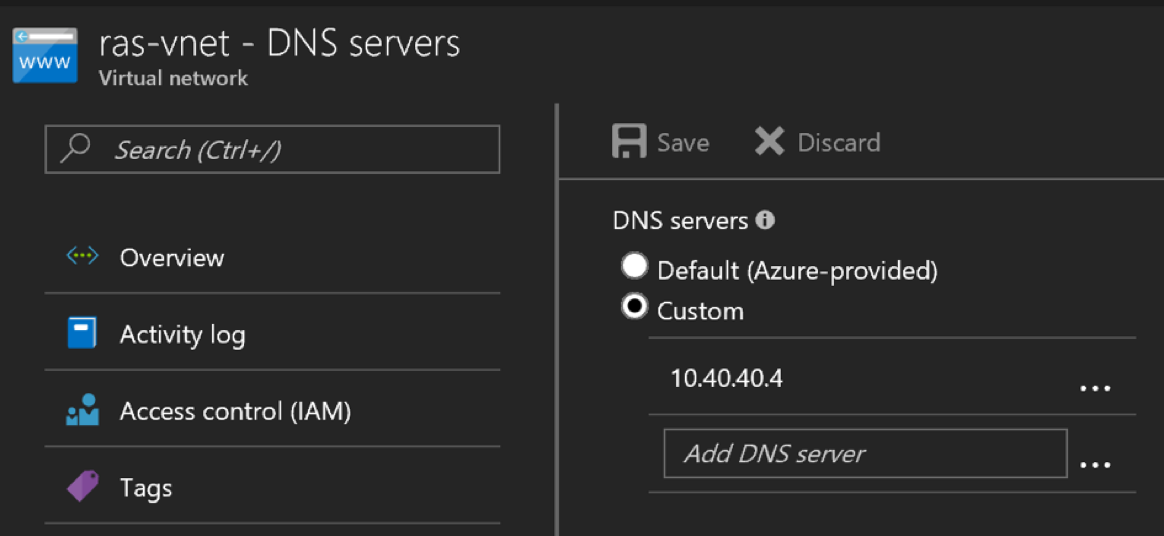
Inside Vnet we create a subnet with the name “ras-subnet”, it has the same address space as Vnet. Of course, this is not a requirement, as long as the domain controller is accessible from the subnet.

I advise you to create a new empty resource group in which Parallels RAS components will be created for this ARM deployment. This makes it easy to group all the components created by the ARM template and to control role-based access. If you use this template to create a temporary test environment, then using a dedicated resource group will also help you easily remove unused resources when you're done. You can not create a group at this stage, but put it off until the template is deployed.
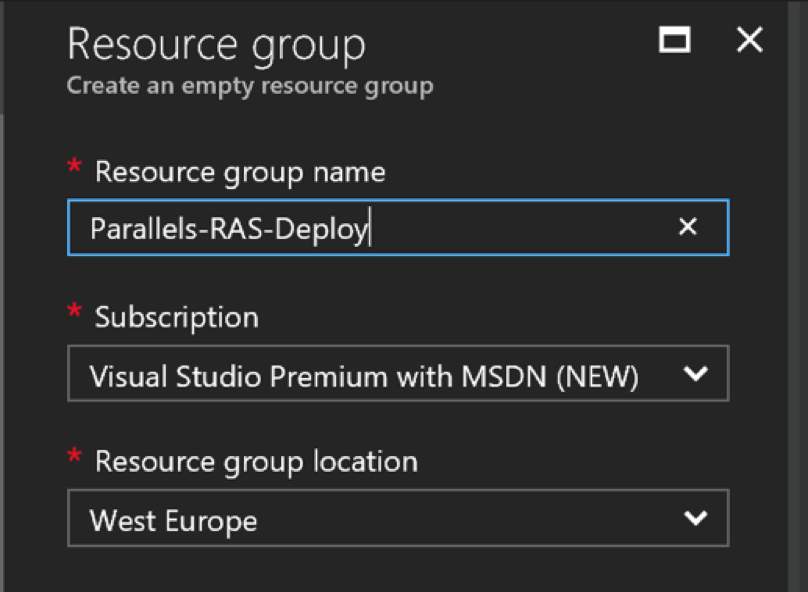
Template parameters
The following is a description of the parameters used to configure an ARM deployment.

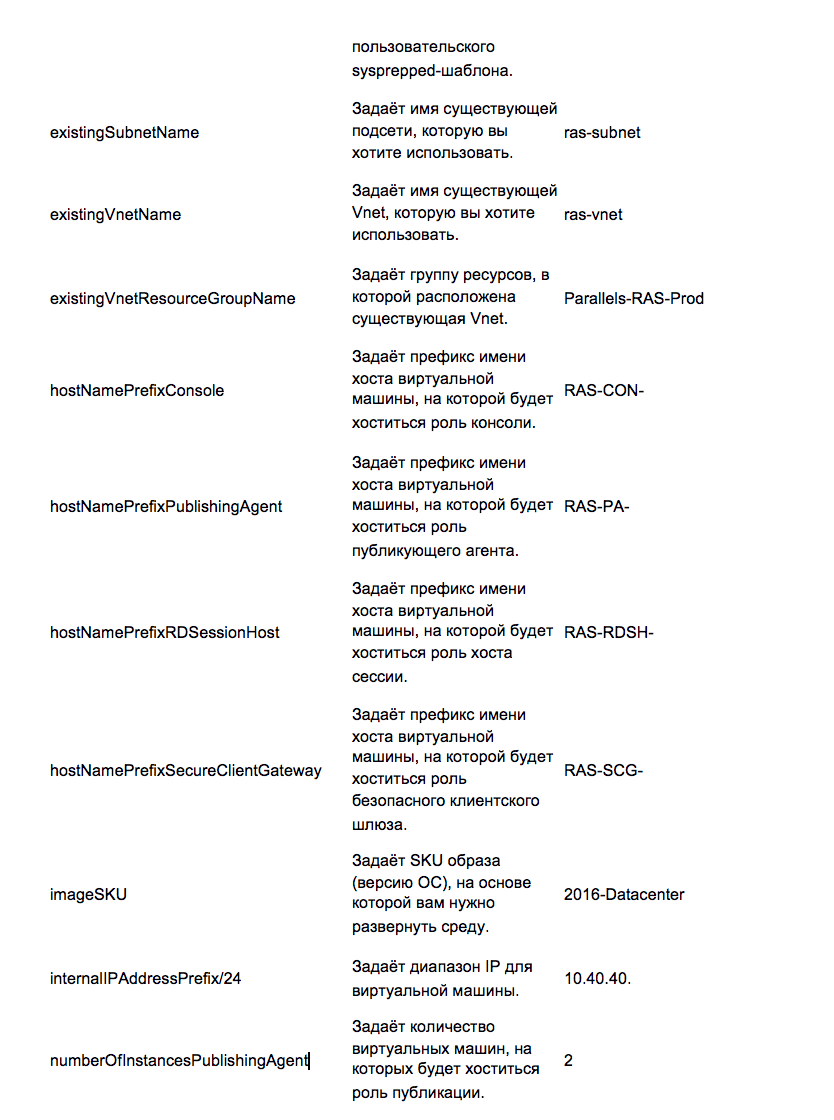


Use pattern
ARM can be downloaded from Github: here
Before using the template, make sure that all the above requirements are met. Then copy the JSON template from GitHub and create the template in your Azure subscription.
To do this, create a new template in the Azure portal and provide a name and description.

Click “Add template.” Remove the default code from the ARM Template section, copy from GitHub and paste the JSON code, click “Ok.” Click “Add” to save the template.

You now have a copy of the template in your Azure subscription. To launch it, open it again and click “Deploy.”

Decide in which resource group and region you want to deploy the template.
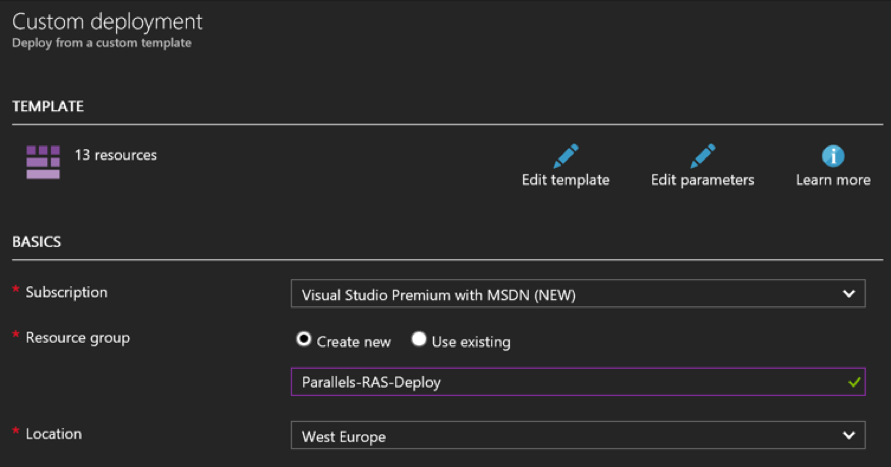
Specify the parameter values to customize the template to your needs. If you hover the cursor over the parameter icon, its description will appear. Or you can read the table above. When finished with setting parameters, click “Purchase”.
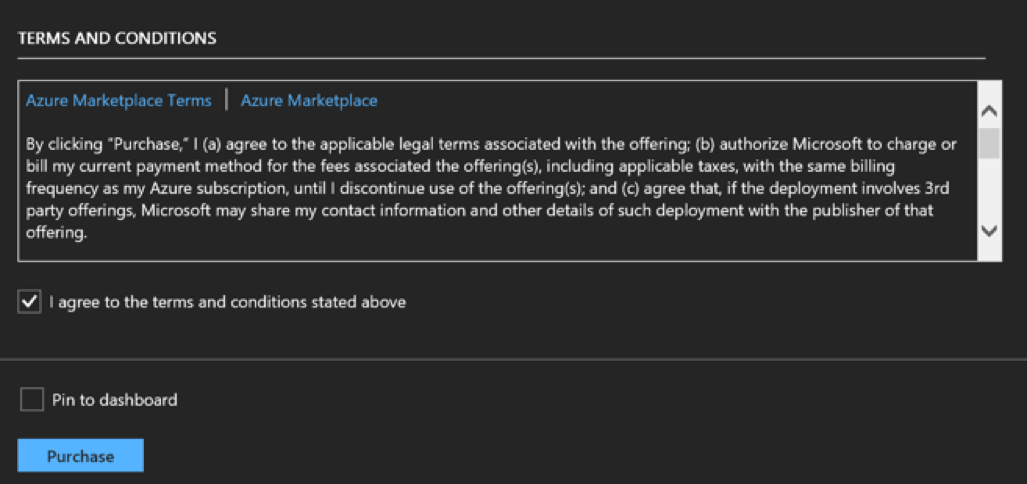
Wait until the deployment is complete. It will take about half an hour.
results
After successfully deploying the template, a highly available Parallels RAS will appear in your Azure IaaS environment.
The convenience of use
To check how convenient it is to use cloud RAS, download the RAS client and create a new session. Enter the public IP address taken from the Azure portal.

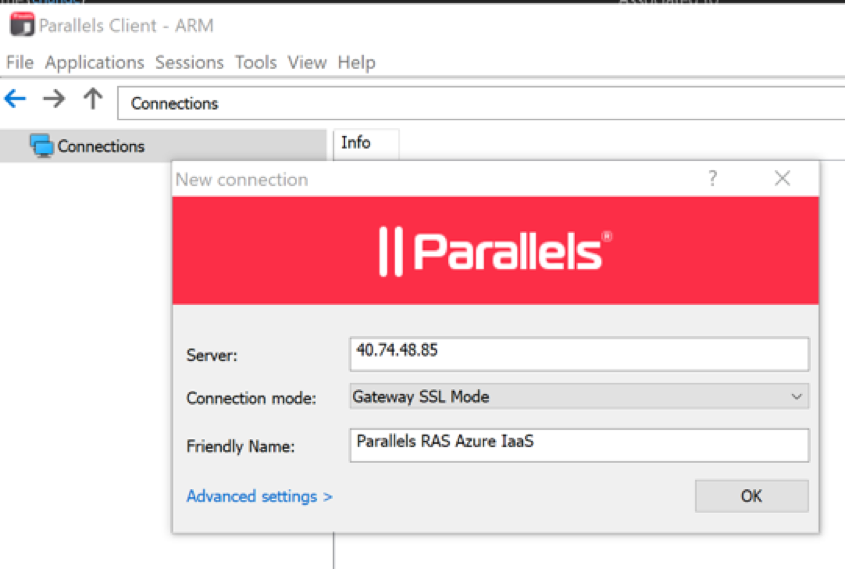
Connect to the created connection by entering the account information specified in the deployment settings.
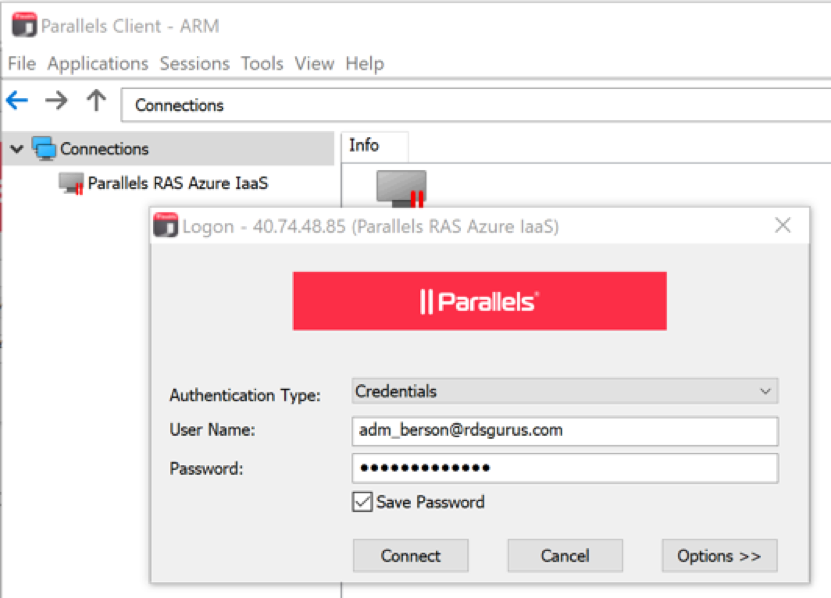
You can now open published applications and desktops to test the Parallels RAS environment as an end user.
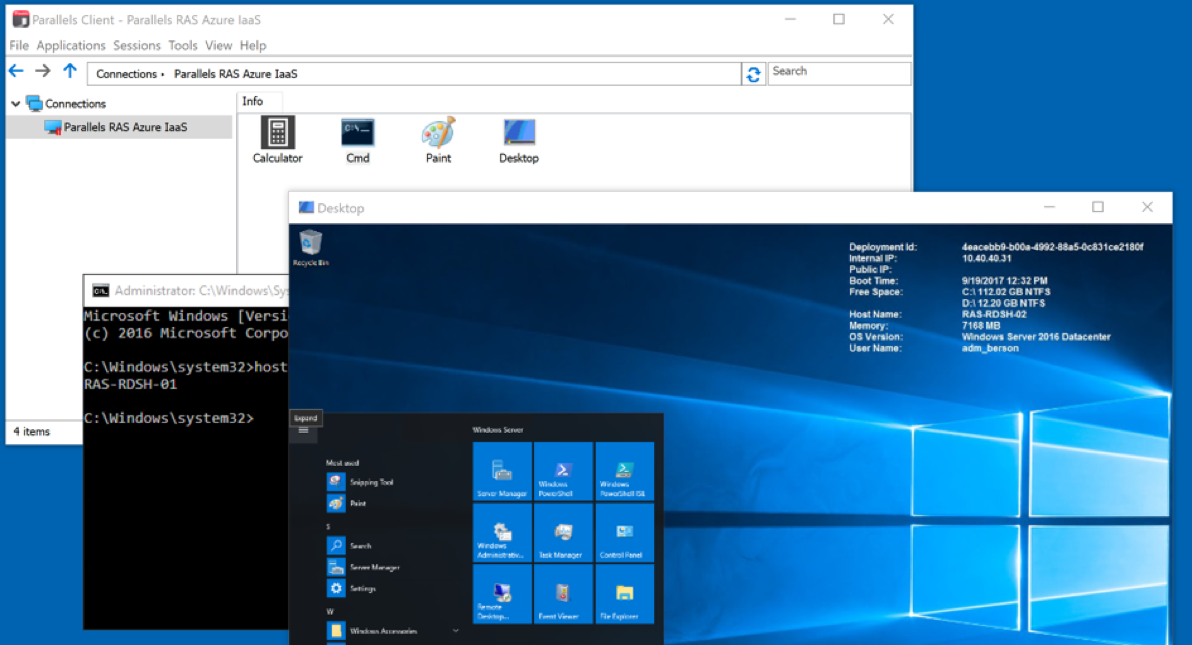
Optionally, you can use the Parallels RAS HTML5 gateway. To do this, open a browser and enter the address https: /// RASHTML5Gateway. Since our RAS has not automatically configured SSL certificates, you will receive a warning about them.


Administration
ARM will install the RAS console and RAS PowerShell modules on the server that was specified in the parameters as the console server (default value is RAS-CON-01). If you establish an RDP connection to the server, you can use the RAS console and the PowerShell module. Start the console from the Start menu and specify the primary publisher server that is specified as the ARM parameter (default value is RAS-PA-01). Then enter the administrator's login and password, as in the ARM-parameters.

ARM deployed all the Parallels RAS roles on several servers, and in the site overview window you should have a picture similar to the one shown in the screenshot. Now you can use the console to further configure the environment.
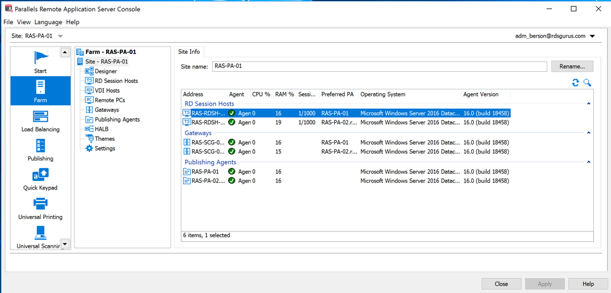
Conclusion
Summarizing the above, it is worth noting that Parallels RAS allows small, medium and large enterprises to easily organize remote employee access to files and applications from any device. Moreover, the key factors in choosing it can be considered the convenience and ease of deployment, as well as the availability of service and support.
Recall that the deployment method described in the article is only a special case of setting up a highly available RAS in the cloud. And if you just want to test the product, then here is a link to a completely ready distribution , which can be deployed in half an hour according to the instructions .
Source: https://habr.com/ru/post/344694/
All Articles